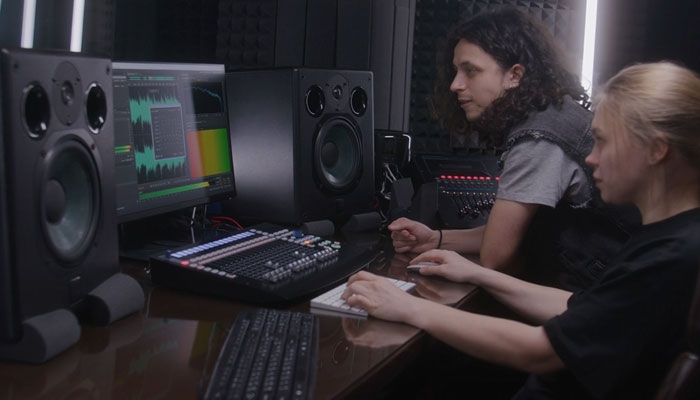Mixing is the first stage of audio post-production. Less mysterious than mastering, mixing is all about creating harmony in your recordings, making sure every element of your song sounds at its best, and that all instruments coexist without frequency clashing.
The fact that mixing is easier to describe than mastering doesn’t mean that the process itself is also simpler.
Creating a cohesive, balanced mix involves making fine adjustments to the frequency spectrum of every track, creating space, and enhancing elements of your soundstage to create a pleasant sound and meet the artist's vision.
Today’s article is for those who are just entering the post-production world. We’ll discuss the most straightforward mixing software that can help you bring your music to life, and how you can mix your tracks using each one of them.
Let’s dive in.
What is Mixing?
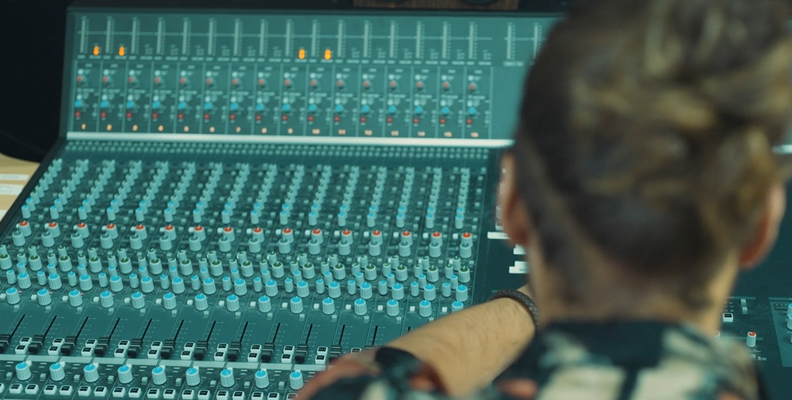
Mixing is a crucial post-production step after the recordings are done. It’s where you combine and balance all the individual recorded tracks (vocals, drums, guitars, keys, bass, etc.) into a cohesive final stereo track.
The main objective of the mixing in music is to make the song sound as good as possible, ensuring all the elements are harmonious, clear, and do not overlap. Together, all the instruments should deliver an emotional impact.
To achieve a good mix, you use different techniques inside your DAW, like balancing levels of each track to make all instruments audible, panning to add depth and position the instruments in the stereo field, EQ to shape and help each instrument occupy its own space in the frequency spectrum, automation, compression, adding effects, and more.
The final mix is passed to the mastering process, where the mastering engineer polishes the mix and prepares the song for distribution to multiple streaming platforms, ensuring it can be enjoyed on any device.
It is recommended that a different engineer handle the mastering than the one who did the mix.
Best Music Mixing Software for Beginners
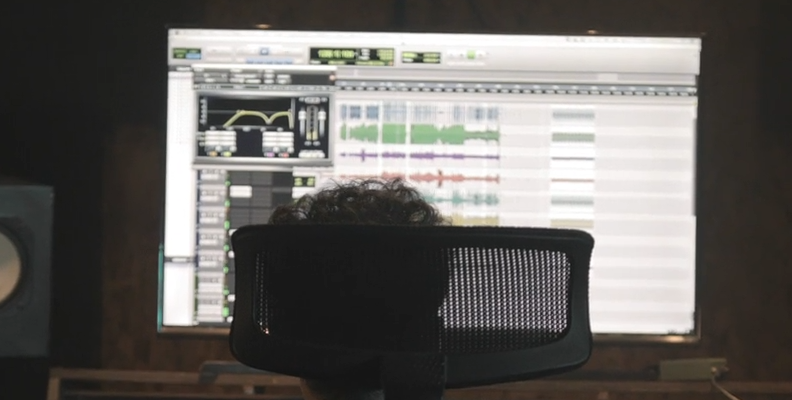
We’ll start with some paid options for a digital audio workstation, covering most needs. Whether you decide to spend more on audio equipment or a powerful computer than on software, or if you’re going all in regardless of the cost of your software, you can rest assured that any of these software are a great choice for beginners.
Boris FX Music Studio

Overview:
Boris FX Music Studio is a beginner-friendly music production software that guides you through the entire spectrum of music production, from recording to mastering a song.
Music Studio is designed with beginners in mind, allowing you to record, edit, and mix with no experience needed. It features a wide range of virtual instruments, loops, and samples for different music genres to get you started.
The Object Editor allows you to edit a small section of a clip and apply effects and plug-ins to audio clips instead of the whole track. Other features I like about Music Studio are the MIDI editor, pitch correction, full mixer view, and the built-in effects.
Among the mixing tools included are the EQ116 (from Samplitude), Compressor, Limiter, Gate, Reverb, Delay, and Vocal Strip. Object-level editing allows you to apply EQ, pitch shift, and time stretching to individual clips, which is really helpful for correcting a specific section of a vocal track or drum recording without needing to separate the track or do complex automation. This is especially useful for beginners who are starting to learn the concepts of music production.
There are a few limitations compared to its big brother, Samplitude 2025. With Music Studio, you are limited to 128 tracks and have fewer plug-ins bundled than Samplitude 2025 and Samplitude Suite, which offer even more advanced mixing and mastering tools and premium plug-ins from CrumplePop, Sound Forge Pro, Celemony Melodyne Essential, Acon Digital Acoustica 7, and Dolby Atmos support.
However, Music Studio supports VST, ReWire, and ARA2 plug-ins, allowing you to expand your plug-in library with third-party plug-ins for instruments and effects. Speaking of the plug-in library, another feature I enjoy in Music Studio is the Plug-in Browser. It makes it so much easier to search, filter, categorize, and favorite the plug-ins to organize extensive collections.
The price for Music Studio is $95 for the perpetual license and $2.92 monthly (billed annually for $35) for the subscription. This is a great entry-level price for beginner music producers. Sadly, it is only available for Windows, so Mac users have to look at some of our other alternatives.
You can register for a free 15-day trial to start creating music with Music Studio before purchasing a license.
Pros:
Cost-benefit.
Supports ARA2 plug-ins.
The plug-in browser helps find your plug-ins easily.
Customizable UI with dockable windows.
Cons:
Only available for Windows 10 and 11.
Paid upgrades.
Limited features compared to Samplitude Pro and Samplitude Suite.
The interface could be improved to look modern.
Reaper
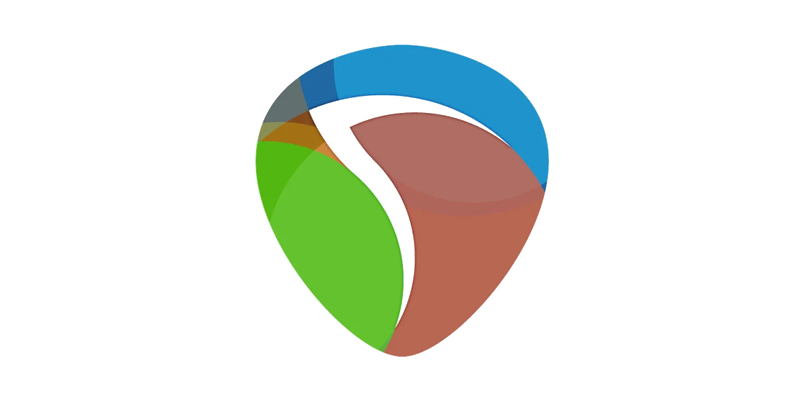
Overview:
Reaper is one of the most affordable options to begin with music production. Its features and performance can rival any other DAW for a much lower cost.
It's a very lightweight application, and its RAM consumption is minimal compared to other DAWs on the list, making it perfect for beginner producers who haven't invested in a powerful computer. But that does not mean Reaper is incapable of producing music like other DAWs used by professionals in a studio.
In Reaper, you can customize every aspect of the interface to make your mixing workflow tailored to your needs. Because it is very lightweight, it is stable enough to handle multiple plug-ins, tracks, and track folders for complex mixing sessions.
One of the things I like about Reaper is that there is no distinction between types of tracks. Simply add a new track, and it can be anything: an audio track, a MIDI track, or a bus track.
Reaper offers two licenses: a discounted license for just $60 and a commercial license for $225, making it very accessible for beginners. You might think that because of its low cost, there won’t be a trial, but there is. You get a fully functional 60-day trial, which is enough to decide if you want to purchase the license.
Pros:
Lightweight.
Good stock plug-ins.
Customizable workflow.
Affordable.
Cross-platform with a single license.
Cons:
Steeper learning curve.
It does not include virtual instruments.
FLStudio
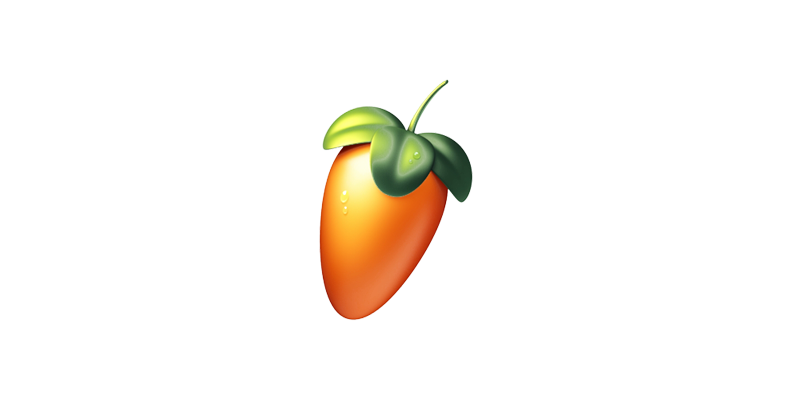
Overview:
FL Studio is a popular DAW that you’ll often see recommended for beginners. It’s intuitive and offers a relatively short learning curve to learn the basics and start making hip-hop beats and melodies in a matter of days or weeks, depending on the time you dedicate to the practice. However, it can get difficult once you start playing with the advanced features.
FL Studio allows you to learn the basics of mixing, routing, gain and panning controls, EQ, compression, and adding reverb and delay effects. It has a dedicated Mixer panel that is customizable to fit your screen and display the things you want.
The price ranges between $99 and $500. You can download the free trial version and use almost all its features without a time limit. The only limitation is that you cannot reopen saved projects until you purchase a license.
Pros:
Lifetime free updates.
Full-featured free trial (with a limitation to reopen projects).
Available for Mac and Windows.
Cons:
It's harder to switch to a different software and re-learn the workflow of other DAWs.
Stability issues.
Ableton Live

Overview:
Ableton Live notoriously offers two different workflows: the classic non-linear editing, like any other DAW (the arrangement view), and the Live workflow (session view), which is its main attraction. This combination allows for a flexible music production approach: you can improvise and experiment in the session view and then turn those clips into tracks in the arrangement view for editing and mixing.
It comes with a decent amount of stock plug-ins and virtual instruments to get you started. The EQ Eight, compressor, glue compressor, and the Utility plug-in are excellent for mixing, providing professional results.
The interface is not intimidating, and you can continue using Ableton Live even after you become an expert. You rarely need to change software unless there’s something very specific you need, or if you feel more comfortable with another music software.
Ableton Live is available for Mac and Windows, with prices ranging from $99 to $800, offering several versions tailored to different music production needs.
Pros:
Designed to be used to perform live.
You can get the lite version bundled with many sound cards, audio interfaces, and audio equipment.
Great stock plug-ins.
Popular for electronic music.
One of the best music production software.
Cons:
UI looks outdated.
CPU demanding.
Price.
Logic Pro
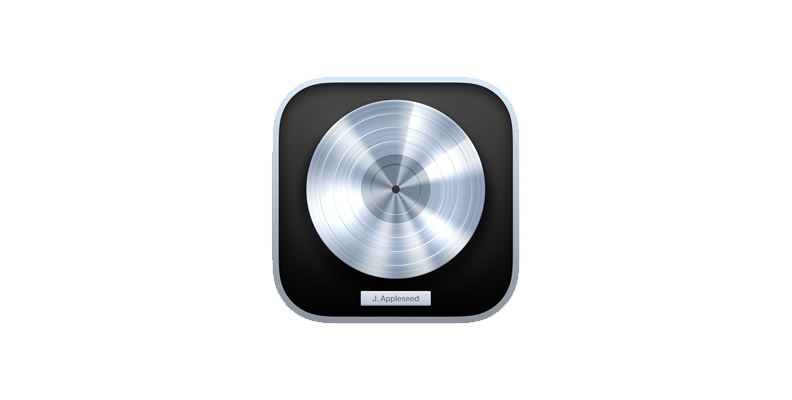
Overview:
For Apple users, choosing Logic Pro is a no-brainer. If you have some experience with GarageBand, the transition will be super easy. It has a clean interface (like most Apple products) and is easy to understand even for someone who’s never used a DAW in their life.
Logic Pro features solid mixing tools such as EQ, compressor, time-based effects, and correction tools. The Mixer console has all you need with channel strips, sends, inserts, faders, etc. One interesting aspect is the integrated Dolby Atmos tools for mixing songs in spatial audio.
There’s only one version of Logic Pro with a one-time purchase of $200. You can download a 90-day free trial to see if it suits your music production needs.
Pros:
Integrated voice pitch correction.
Good-looking and easy-to-use interface.
Supports ARA plug-ins.
Seamless integration with the iPad version.
One-time purchase.
Cons:
Only available for Mac OS.
It uses AU (Audio Units) plug-ins only.
No VST support.
There is no search function in the plug-in menu.
Best Free Music Mixing Software for Beginners
Next, I wanted to include free music-making software options to consider. Just because they are free, it doesn't mean these programs are less capable of recording and mixing music: some of these free software choices are truly powerful and can compete with other DAWs mentioned earlier.
GarageBand
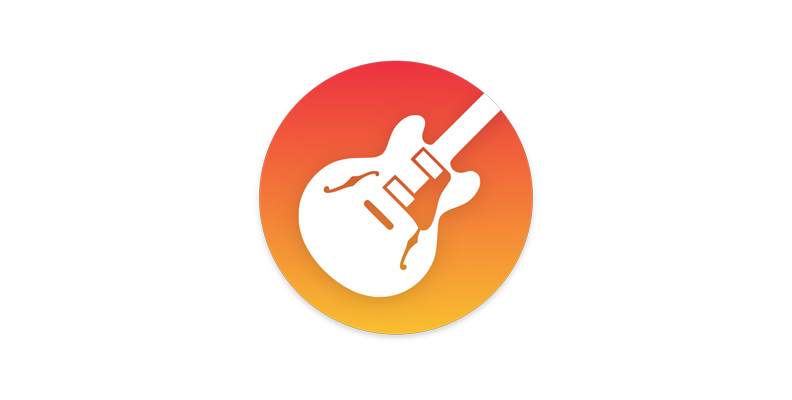
Overview:
If you are a Mac user, there is no better way to start than with GarageBand. Some Mac comes with it pre-installed, but you can download it for free from the App Store. GarageBand has an intuitive interface and can guide you through your journey in music production.
Mixing in GarageBand is great for beginner and intermediate music producers, providing a solid foundation of essential tools (volume, panning, EQ, compression, FX) that are accessible and user-friendly.
One of the best things about GarageBand is that it serves as a starting point to learn the basics of recording and mixing. Whenever you decide to upgrade to GarageBand's older brother, Logic Pro, the transition will be seamless because Logic Pro can open GarageBand files to continue working on your old projects.
Pros:
User-friendly interface.
Seamless ecosystem with the iPhone and iPad versions.
Your GarageBand files can be opened in Logic if you decide to upgrade. (No work is lost).
Cons:
Only available for Mac.
Maximum of 255 tracks by default.
Cakewalk Next

Overview:
Cakewalk is a name that has always stood out in the music industry. The original Cakewalk and Cakewalk Sonar were only available for Windows users, but now, Cakewalk Next opens its doors to Mac users, too.
The mixing process in Cakewalk Next is very straightforward and intuitive, providing core mixing tools, effects, and plug-ins without complex steps. Cakewalk is a DAW that allows you to learn and keep growing with the software.
If you already use the cloud-based BandLab, you can use the same account to use Cakewalk Next and publish your songs in BandLab.
Pros:
Intuitive and clean UI.
Unlimited number of tracks.
Essential mixing and mastering tools.
Cross-platform.
Cons:
It can not open old Cakewalk and Cakewalk Sonar projects (there’s a workaround, but it takes more steps to transfer).
Requires a BandLab account, but today many software require registration or additional software to access your licenses.
Waveform Free
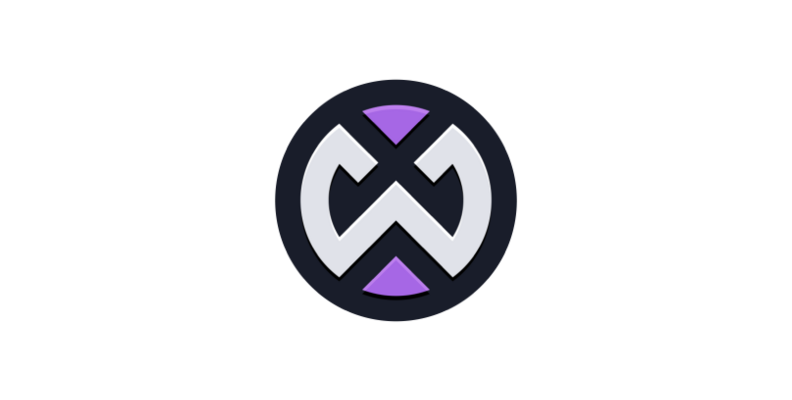
Overview:
Waveform Free is a fully featured, unlimited free version of Traction Waveform Pro. It stands out for having unlimited tracks, with the only limitation being your computer’s power. There are also no restrictions on plug-in support, project save, and reopening.
Yes, there is a paid Pro version, but it only offers additional tools, plug-ins, and effects that you can replace with other third-party plug-ins. Waveform Free is compatible with VST, AU, and LV2 plug-ins. You can start using the included tools, third-party plug-ins, and eventually get the expansion packs as you need them.
What I like about Waveform Free is that it can grow with you as you develop your skills, without needing to go full Pro, and avoid spending too much on things that you may not even need yet.
Mixing in Waveform Free is very intuitive. You can quickly search for and apply plug-ins, as well as rearrange the chain. The drag-and-drop workflow is easy to understand and very visual. The delays and reverbs are very great for a free music production software.
Waveform Free is available for Windows, Mac, and Linux. To download the program, you need to register to access the download link. During the registration process, you may be offered a “Welcome Bundle” for a discounted one-time purchase, which includes instruments and other tools that I highly recommend.
Pros:
100% unrestricted.
Unlimited tracks
Available for Mac, Windows, and Linux.
Plug-in search function.
VST, AU, and LV2 plug-ins support.
Expandable with expansion packs.
Cons:
Some users find it counterintuitive, but mostly those coming from other DAWs.
It is less mainstream, so there are fewer tutorials and guides compared to other DAWs.
Audacity

Overview:
Although Audacity is primarily an audio recording and editing software, it provides straightforward recording and mixing tools for simple projects. If you only deal with vocals or podcasting, Audacity will be enough to start and learn the mixing process. Once you want to work with virtual instruments and more audio tracks, you’ll need to look somewhere else.
As far as audio editing tools go, Audacity is good for mixing basic multitrack projects. It features EQ, compressor, gain, and panning tools. I recommend Audacity mostly for spoken word content such as podcasts, voice-overs, voice-acting, and interviews.
Pros:
Straightforward editing.
Cross-platform.
Supports third-party VST plug-ins (effects only).
Cons:
Limited features for advanced process.
Lacks MIDI keyboard support.
Does not support virtual instruments.
Final Words

With so many options, it’s hard to choose the best digital audio workstation for music mixing. The more you keep reading, searching, and watching reviews of the top DAWs, the more confused you’ll get.
My recommendation is to choose one or two options from the list. They could be the ones you like the most, the most affordable, or the ones with the most plug-ins—whatever interests you. Download a free trial of each, explore them, record something or import a few samples, watch a tutorial, and get hands-on experience.
Every DAW has its strengths and weaknesses. What I liked about one, you may not like (don't take my word for granted). Find what works for you and feels more comfortable. If either of the two options you choose does not feel good, then exchange them for another in the list. You should spend a few weeks or months with the chosen DAWs to fully explore them and produce a few songs before switching to another.
When you come across a DAW that lets you work quickly, efficiently, and comfortably, you have found "the one."
Have fun, and stay creative!











